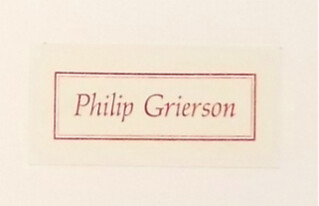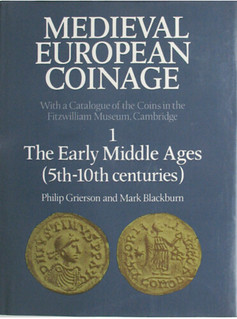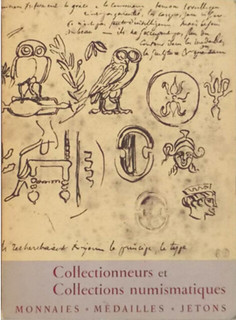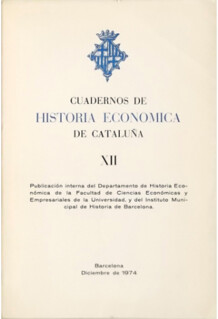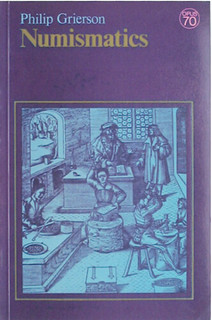
PREV ARTICLE
NEXT ARTICLE
FULL ISSUE
PREV FULL ISSUE
PAUL WITHERS REFLECTS ON NUMISMATIC BOOKSPaul Withers of Galata Coins in Llanfyllin, Wales submitted this wonderful essay on Prof. Philip Grierson and numismatic literature. Thanks! -Editor
COLLECTIONS and COLLECTORS and some reflections on numismatic books, their content, design and usefulness.
In Cambridge, Professor Philip Grierson was a remarkable man in a city of remarkable men. I first met him one summer day on a visit to the Fitzwilliam Museum, when the late Mark Blackburn, another eminent scholar, was Curator of Coins and Medals. At the time Grierson was about to celebrate his 90th birthday. Dr Martin Allen, who was looking after us that day, told us that the great man was coming in and arranged us so that our piles of books and trays of coins we were photographing did not conflict with Grierson's important work of checking one of the volumes of Medieval European Coins. We were a little in awe of the person who was about to come in, we knew that he had simultaneously held three important academic posts in no fewer than three countries. In addition to the chair of Numismatics in Cambridge, he had been professor of numismatics at Brussels university, in Belgium. The third country was the USA, where in 1953, Grierson was one of the founding instructors at the American Numismatic Society's annual summer school. He returned the following year, and in 1955 was invited to become honorary adviser and curator at the Dumbarton Oaks Research Library and Collection in Washington DC, managed by the trustees of Harvard University. His task there was to use the centre's resources to build the world's finest collection of Byzantine coinage, and publish it, which he did. Therefore, at the height of his productivity, Grierson spent the Michaelmas, Lent and Easter terms each year in Cambridge, Christmas and Easter in Brussels and eight or nine weeks of the summer in Washington. In addition to the above, he had carried out the normal college and Cambridge university functions that his job demanded, and he was also a syndic of both the University Library and the Fitzwilliam Museum, and chairman of the library management board. As well as these, from 1945 to 1955, he was literary director of the Royal Historical Society*. From 1961-5 he was president of the Royal Numismatic Society, and Ford's Lecturer in Oxford from 1956-57. He was made a fellow of the Society of Antiquaries in 1949, when I was still wearing short trousers and did not know what an antiquary was; let alone a fellow of the British Academy, to which honour he was elected in 1958. An important guy indeed ! As well as his distinguished reputation, my wife and I knew that he was old, so I guess that I was expecting a sedate academic wearing a business suit. We were certainly not prepared for someone who turned up sweaty and wearing khaki knee-length shorts because he'd arrived on a racing bicycle. Otherwise, he was quiet and self-effacing. We were even more impressed because he was not in the least bit old, stuffy or pompous. Initially arriving in Cambridge to study medicine shortly after the end of WW1, he was to later to produce an unrivalled flow of scholarship, though he soon changed his field of study from medicine to history. His earliest research was on ecclesiastical history and he won the Lightfoot prize in theology ! It was the chance find of a Byzantine bronze coin in one of his father's desk drawers in 1944 that inspired Grierson to visit Spink's in London, where he bought £5 worth of coins for students to handle in his lectures and tutorials Reportedly, by the end of 1945 he had 1,500 coins, and a year later 3,500. Eventually his collection had more than 20,000 and is perhaps the finest representative collection of medieval European coins in the world. Although, for security reasons, the collection was kept in the Fitzwilliam Museum for many years, ownership only passed to the museum on his death, it being retained as his own property, so as to enable him to sell pieces as and when he saw an improved specimen. His books too, were his property, and bear a neat name label. He had started collecting coins at a time when London numismatic dealers were awash with material which had come from the sales of the enormous collection of Lord Grantley. Post-war conditions meant that these coins were available at a fraction of their pre-war price. Not a wealthy man, Grierson was a careful, selective buyer, though in later years, he could spend substantial amounts when it was necessary. He also bought significant material from continental dealers at a time when most Europeans, including the British, were subject to rationing, and more concerned with buying food than coins.
His work and studies were eclectic to say the least, involving not just wide and detailed historical knowledge of ancient and medieval numismatics, but covered other diverse skills and branches of knowledge such as mathematics, statistics, metallurgical analysis, economics in an impressively wide range of languages. His library reflected all of these. Now I have to stress that we did not buy his library, only its duplicates, but apart from really rare and precious things, Grierson had kept duplicate copies in his rooms, for those moments when the museum was closed, so what we have is not just the dross. Having bought thousands of books over the years, I have at various times have had to change my opinion as to what is dross. Some that I had initially thought of discarding have entered our own library and now have a place of honour on the shelves. One such book is Birmingham and the Midland Hardware District : A series of Reports edited by Samuel Timmins. This I bought 30 years ago, as part of an auction lot. It is a 1967 reprint of the 1866 original, and there are now POD reprints available from several sources. However, when I bought it, I almost slung it away, until I read just a few of its pages and I was hooked. Over the years I have consulted it again and again and used its information when writing our books on 18th and 19th century tokens. It is a marvellous store of information. I have no doubt that there are such treasures in this lot too, some are obvious, whilst others are sleepers. Although they are not all immediately available, one by one, the contents of the forty-odd boxes of books will be catalogued and be offered for sale on our website for your delectation.
It is not just a large book, but also a wonderful example of 1960s French pomposity meeting arty-farty design and Gallic obfuscation. For example, the four-page long list of contents, that length due to the overly large 'artistic' typeface employed, is cunningly hidden at the rear of the book where the listing of officials and self-important political functionaries ought to be, if at all ! Nowhere to be found among all the preliminary crap is the really important bit - the name of the person who had the task of editor ! Now this is a shame. Why ? Well, for a start, the name deserves
a little fame, if only (perhaps?) posthumously, for without the name of Books that do have his name sticker are several volumes in the series Cuadernos de Historia Economica de Cataluña. Now, with a title like that and coming into the category of Periodicals it is unlikely to attract much attention, and will probably languish until a Spanish-speaking bibliophile, with a penchant for historical economics, realises their true worth and gets as much delight from their pages as Prof. Grierson did. 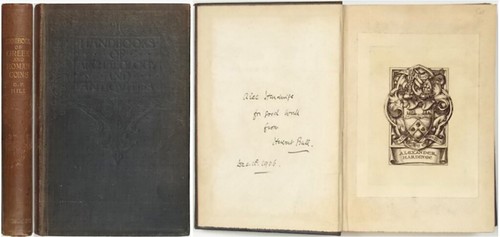 Another book from his library that does not bear his name tag is G F Hill’s Handbook of Greek and Roman Coins, perhaps because it already has an impressive bookplate and an inscription that indicates that it was given as a prize. I wish that I could say that I immediately knew who its previous owner was. However, a little research revealed that Alexander Hardinge was quite a celebrity in his day, having been personal private secretary to Edward VIII at the time of his abdication in 1936, and afterwards, for a short while, continued as PPS to his brother, who became George VI.
If, out of curiosity, you do visit our website and want to see what what delights are available, enter the word Grierson into the FIND box and look at what comes up. Even with all of the other things that we do, such as writing and editing our own publications, we hope to get between 10 and 30 new items from the Grierson library listed each week. * For those who do not know about the Royal Historical Society, should note the name, for publications associated with it are uniformly excellent, and whatever their subject are a good read, though sadly, they are not plentiful. One such that sits on my shelves is Handbook of British Chronology, edited by F M Powicke, which should sit on everyone's shelves. My own copy of this was bought 30 years ago from a secondhand book shop. It was priced at £1, and I got a generous discount. Why did I get a good discount ? Perhaps because its top is dusty, its cover heavily sunned and it is damp damaged, but after all these years, I would not part with it, because I have grown used to its little foibles such as its bowed front cover. Why do I like it so much ? Perhaps because I love books and its 440 pages contain such valuable chapters as Saints' Days and Festivals used in Dating, Regnal Years, Provincial and National Councils of the Church in England to 1536, an Alphabetical list of Dukes, Marquesses, and Earls 1066-1603. Rulers of England from 1066, Rulers of the Isle of Man, English Officers of State. A List of Chief Governors of Ireland 1172-1939. A list of Bishops of England, Wales, etc., and more. It has become an old friend, and I know that I can trust it ! To visit the Galata Coins web site, see:
 Wayne Homren, Editor The Numismatic Bibliomania Society is a non-profit organization promoting numismatic literature. See our web site at coinbooks.org. To submit items for publication in The E-Sylum, write to the Editor at this address: whomren@gmail.com To subscribe go to: https://my.binhost.com/lists/listinfo/esylum All Rights Reserved. NBS Home Page Contact the NBS webmaster 
|
